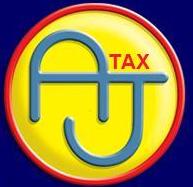You only have a few weeks if you want your refund as soon as possible.
1. All of the relevant financial information about your job in 2015
Anyone who worked in 2014 will need to know key figures like how much income they earned, as well as how much they had withheld from their paychecks for things like federal and state income taxes. But to avoid problems, you can’t simply add up your gross income, because many people have deductible expenses like health insurance contributions automatically taken from their paychecks.
Tax W
W-2s are ideal sources for information for your tax return.
The ideal source is a W-2 from your employer, but given that employers not required to provide W-2s until the end of the month, you may be tempted to look for other sources of that information. Using your final paystub of the year can work, but only if you take deductible and nondeductible withholding correctly into account. It generally pays to wait until you get your W-2 before you file, even if that won’t come until a week or two past the official beginning of tax season.
2. Investment income information
If you earned money from your investments in 2014 — whether it came from interest in a simple savings account or dividends from stocks or funds — you’ll need to account for that on your tax return. Again, the ideal source of information is the 1099 your financial institution is required to send, but most of those forms don’t go to taxpayers until later in January or even February.
Year-end financial statements often include year-to-date income information that you can use on your taxes. That’s no guarantee that things won’t change between year-end and when you receive your 1099, as some companies end up having to change the way they characterize some of the money you received from your investments.
3. Records on deductions and credits
Many taxpayers simply take the standard deduction, so keeping track of the many deductions available isn’t necessary. But if you itemize your deductions, you’ll need the supporting paperwork to justify what you include on your return.
With items like mortgage interest or student loan interest, you can typically figure out what you’ve paid by looking at monthly statements and adding figures together. Similarly, keeping track of how much you’ve spent on items that are eligible for tax credits often requires simply looking at your checkbook or bank records. So long as the figures you use match up with the forms you’ll later receive from your lender or financial institution, you won’t have to file an amended return later or give back any of the refund you’ve earned.
4. Bank account information for direct-depositing your refund
If you want your refund as quickly as possible, there’s no substitute for the combination of electronic filing and direct deposit. E-filing allows your returns to be more quickly sent in and processed, and using direct deposit saves the mailing time of a physical check.
To use direct deposit, you’ll need to have your bank routing number and account number handy. Without a qualifying account, you’ll have to use the traditional refund-check method instead, and that could add days or even weeks to your waiting time before you have your hard-earned money back in your hands.
Trying to file on the first day of tax season can end up being more trouble than it’s worth. But if you have all the necessary information to file, then you can celebrate the beginning of the 2015 tax season by getting your return filed early while remaining confident you won’t have a problem later down the line.

